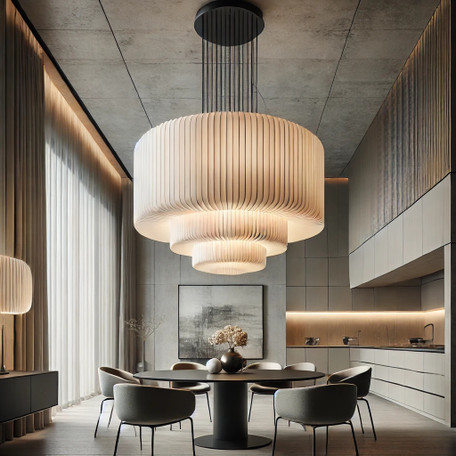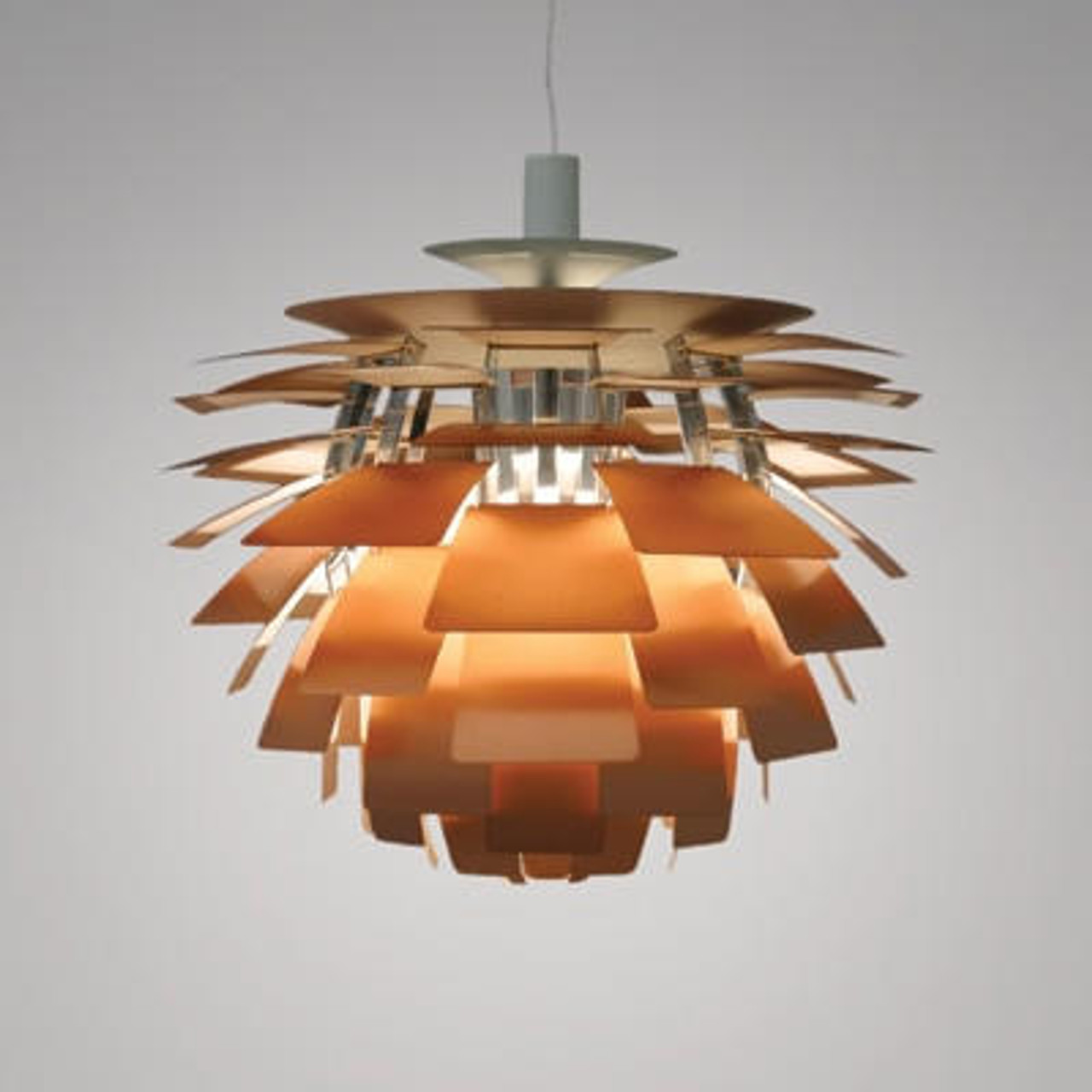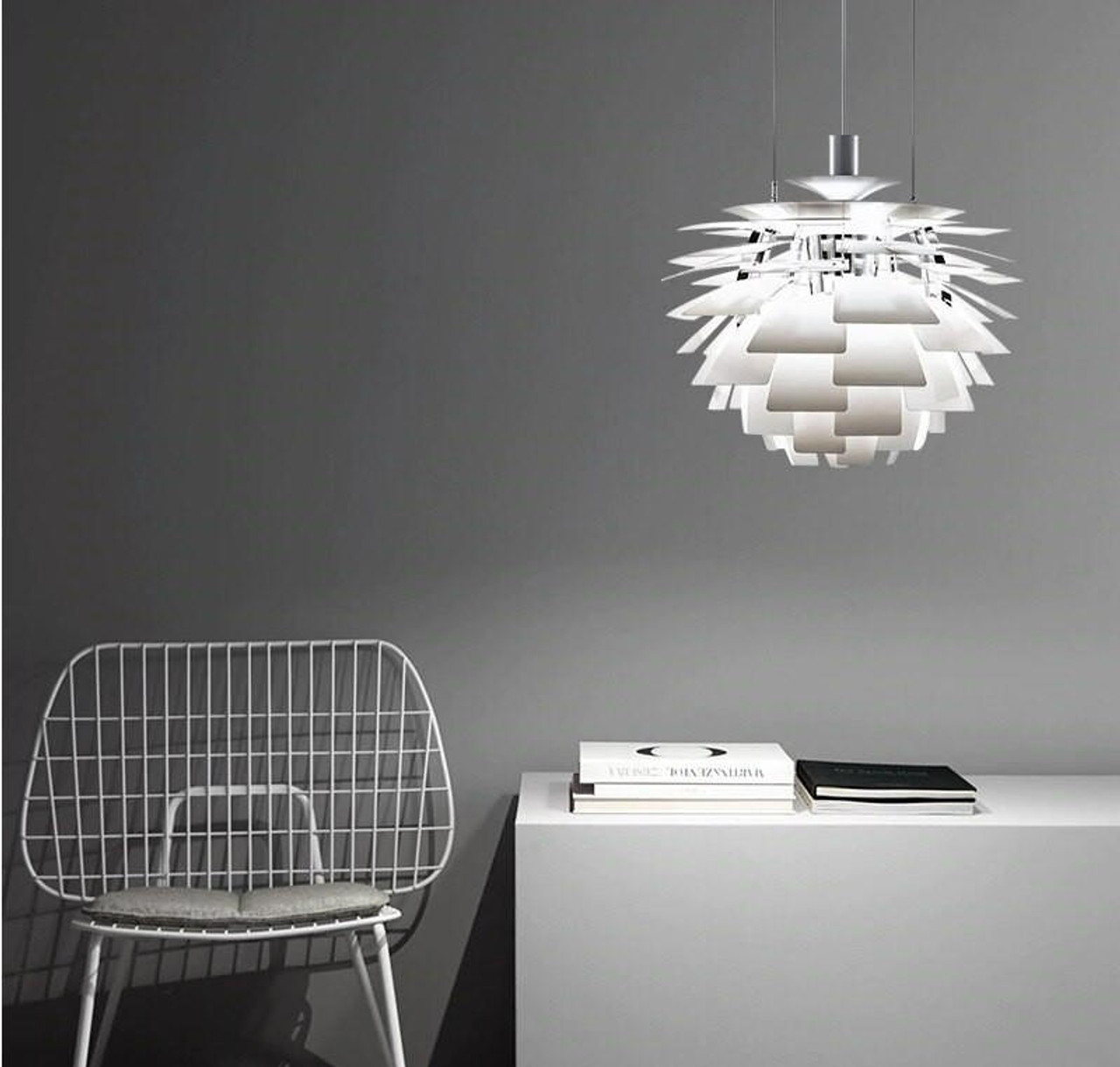The Timeless Design of the Henningsen 50 Pendant Lamp: A Modern Classic
Posted by Carl Jenkins - Senior Architectural Designer on 17th Oct 2024
In the pantheon of great design, few objects capture the essence of timelessness like the Henningsen 50 pendant lamp. While some lighting fixtures are born out of fleeting trends, the Henningsen 50 remains an enduring symbol of elegance, functionality, and innovation—qualities that have made it a beloved fixture in modern homes and architectural projects around the world.
The lamp, designed by Danish architect and designer Poul Henningsen, continues to captivate both designers and consumers alike. What makes the Henningsen 50 pendant lamp a modern classic? To understand this, we must delve into its history, its design philosophy, and the ways it has reshaped the concept of lighting in modern interiors.
The Origins of a Masterpiece
Poul Henningsen, affectionately known as PH, was no ordinary designer. Born in 1894, his work traversed architecture, design, and critical essays on culture and society. But it is in lighting design where his genius found its most potent expression. Inspired by a need to combat the harsh, direct lighting that was the hallmark of early 20th-century electrification, Henningsen sought to create fixtures that offered soft, glare-free illumination.
The Henningsen 50 pendant lamp is one of the many fruits of this labor, born in a period of intense innovation. Released in the mid-20th century, this lamp is a part of Henningsen’s famous PH series, designed to revolutionize the way light is distributed in interior spaces. The Henningsen 50 epitomizes his philosophy that light should be diffused and harmonious, mimicking the gentle glow of natural daylight while being an object of beauty in its own right.
The Design Philosophy: Form Meets Function
The Henningsen 50 pendant lamp stands as a tribute to Henningsen’s commitment to functionalism in design, where form follows function, but without sacrificing beauty. This lamp is composed of multiple, delicately layered shades, arranged to reflect and refract light in such a way that it becomes both soft and omnidirectional. The result is an even illumination that eliminates harsh shadows and glaring direct light.
The number “50” in the lamp’s name refers to its 50-centimeter diameter, a scale that allows the lamp to make a visual impact in any room while still feeling unobtrusive. Whether hanging above a dining table or illuminating a living space, the Henningsen 50 pendant lamp draws attention without demanding it, a hallmark of great design.
The shades, typically made of metal or glass, are painted white on the inside to optimize light reflection, while their exterior often comes in a variety of muted tones or metallic finishes, allowing the lamp to blend into different interiors. This adaptability is a testament to the versatility of the Henningsen 50 pendant lamp, a product that transcends the boundaries of time and style.
Engineering Light: The Science Behind the Design
At the core of Henningsen’s design ethos was his deep understanding of the science of light. The Henningsen 50 pendant lamp is not merely an aesthetic object; it is a carefully engineered lighting solution. Each of the concentric shades that make up the lamp serves a specific purpose, bending and redirecting the light emitted from the bulb so that it is dispersed evenly throughout a space.
Henningsen's approach was revolutionary at the time. His goal was to achieve glare-free lighting by hiding the light source within the curves and layers of the lamp itself. The layered shades create a soft, diffused glow that mimics natural light. This was a radical departure from the harsh, single-bulb fixtures common in early electric lighting.
The brilliance of the Henningsen 50 pendant lamp lies in its ability to create ambient lighting that is warm, comfortable, and conducive to both everyday activities and leisurely moments. Henningsen’s goal was not just to light a room but to improve the quality of life within it by using light to shape the mood and experience of a space.
A Legacy of Danish Modernism
The Henningsen 50 pendant lamp is a paragon of Danish modernism, a movement that sought to combine simplicity, craftsmanship, and functionality in a way that resonated with the needs of modern living. Danish design has long been admired for its ability to balance form and function, and the Henningsen 50 is no exception.
Henningsen’s designs are often associated with the minimalist aesthetic of Scandinavian design, yet there is an undeniable warmth and humanity to the Henningsen 50 pendant lamp. Unlike the stark, cold minimalism of some modernist designs, Henningsen’s work reflects a deep sensitivity to the way people live, move, and interact with their environments. The Henningsen 50 may be clean and simple in its form, but it is imbued with a sense of purpose and care that makes it feel more like an organic extension of the spaces it inhabits.
Versatility and Appeal in Contemporary Spaces
One of the Henningsen 50 pendant lamp’s greatest strengths is its versatility. It fits as comfortably in a sleek, modern loft as it does in a more traditional or eclectic interior. Its minimalist design ensures that it never overwhelms a space, but rather complements and enhances the overall aesthetic.
Interior designers frequently turn to the Henningsen 50 because of its ability to adapt to various design schemes. In contemporary homes, its clean lines and understated elegance are ideal for open-plan living areas, kitchens, and dining spaces. Its soft, ambient light creates a welcoming atmosphere, making it a perfect centerpiece for social gatherings or intimate dinners.
The Henningsen 50 Pendant Lamp in Public Spaces
While the Henningsen 50 pendant lamp is most often associated with private homes, its presence in public spaces is equally noteworthy. Hotels, restaurants, galleries, and corporate offices around the world have incorporated this lamp into their interiors, recognizing its ability to create a calm and inviting environment.
In public spaces, the Henningsen 50 takes on an almost sculptural role. Its layered shades create a visual rhythm that draws the eye upward, making it an ideal fixture for lobbies, atriums, and large dining areas. Yet, even in these grander settings, the Henningsen 50 never feels out of place. Its quiet elegance allows it to serve as a focal point without dominating the space.
Craftsmanship and Materials: A Commitment to Quality
No discussion of the Henningsen 50 pendant lamp would be complete without acknowledging the impeccable craftsmanship and high-quality materials used in its construction. Henningsen was committed to producing lighting fixtures that were not only beautiful but durable and functional. The Henningsen 50 is typically crafted from high-quality metals, including copper, brass, and steel, with shades that are carefully finished to enhance the diffusion of light.
Conclusion: Why the Henningsen 50 Pendant Lamp is a Modern Classic
The Henningsen 50 pendant lamp is more than just a lighting fixture; it is a symbol of what great design can achieve. With its timeless aesthetic, functional brilliance, and deep roots in both science and art, it has transcended its original context to become a modern classic.
Its legacy as a masterpiece of Danish design remains as strong today as it was when it was first introduced. For those who value the interplay of light, space, and form, the Henningsen 50 pendant lamp represents the pinnacle of modern lighting—a true testament to Poul Henningsen’s visionary genius and his enduring influence on the world of design.




